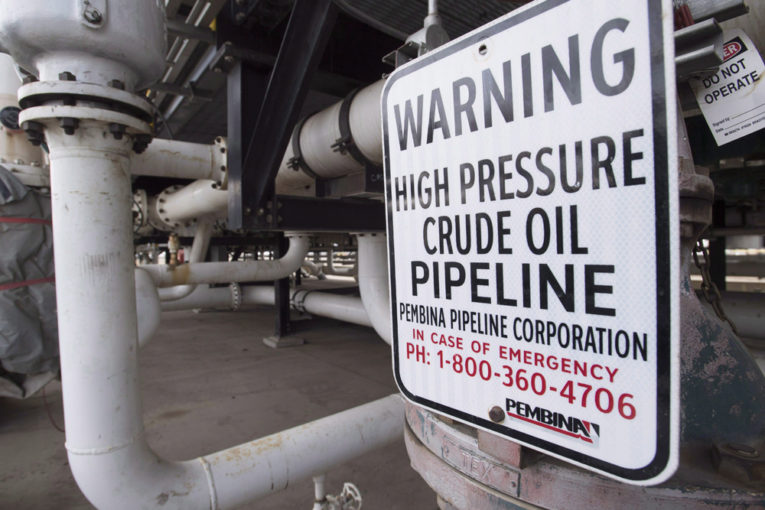
Alberta’s plan to boost crude prices through mandatory production cuts is working a little too well.
Just over a week after Premier Rachel Notley announced that oil producers will be required to curtail output by 8.7 per cent, the price of heavy Canadian crude has more than doubled, in some cases rendering Western Canadian Select too expensive to ship south to U.S. Gulf Coast refiners.
Alberta’s heavy oil trades at about US$41 a barrel, about US$9 less than on the U.S. Gulf Coast, according to traders and data compiled by Bloomberg. For a shipper without committed volumes, that price difference is so small that it wouldn’t cover the costs of shipping it down either TransCanada Corp.’s Keystone pipeline to Houston or Enbridge Inc.’s pipeline system. Gulf Coast imported about 500,000 barrels a day of Canadian crude in September.
“Everyone is bidding up those barrels to make sure they can cover their pipe space,” Mike Walls, a Genscape analyst, said by phone. “People are really just hyper-focused on January and that’s why you are seeing these dramatic price moves.”
For companies without commitments to ship regular volumes, a barrel of crude sent down the Keystone system from Hardisty, Alberta, to Houston will cost more than US$15.50 a barrel starting Jan. 1, according to the tariff filed with the U.S. Federal Energy Regulatory Commission and Canada’s National Energy Board. The cost to ship uncommitted volumes to Texas from Hardisty down Flanagan South via the Enbridge mainline is about US$9.40 a barrel including a separate power charge, according to a filing with the National Energy Board.
Crude Cuts
The provincial government’s Dec. 2 announcement, welcomed by some oil companies as necessary and criticized by others as an example of government overreach, came after heavy Canadian crude prices shrank to less than US$14 a barrel last month, the lowest in at least ten years, as a surge of production met limited pipeline space causing bottlenecks. The mandate will remove 325,000 barrels a day from the market in January before dropping to 95,000 barrels a day by the end of the year.
Since cuts were announced, Western Canadian Select crude has surged to almost US$41 a barrel, about US$11 less than the West Texas Intermediate futures price. The price difference between WCS and WTI was as wide as US$50 a barrel in October.
This narrow differential won’t last, according to Walls and Sandy Fielden, an analyst at Morningstar Inc.
Full Pipes
As long as the pipes are full, the price difference between Canadian heavy crude and West Texas Intermediate futures will necessarily widen enough to cover the costs of shipping the crude by rail to the Gulf, which is between US$18 and US$22 a barrel, Walls said. Alberta’s government has tried to stimulate crude-by rail shipments by announcing plans to purchase rail tanker cars.
“The pipelines are chock full and they will stay chock full,” Fielden said in a note Monday.
WCS’s discount to WTI widened US$1 to US$12 a barrel on Wednesday after Enbridge announced additional rationing this month on its pipeline system because of a power cut in Saskatchewan last week that shut some of its mainline system.
Notley on Monday also announced that the province is seeking investors interested in building a new refinery in Alberta as a way of improving the prices received for the province’s oil.
Bloomberg.com
You can read more of the news on source
